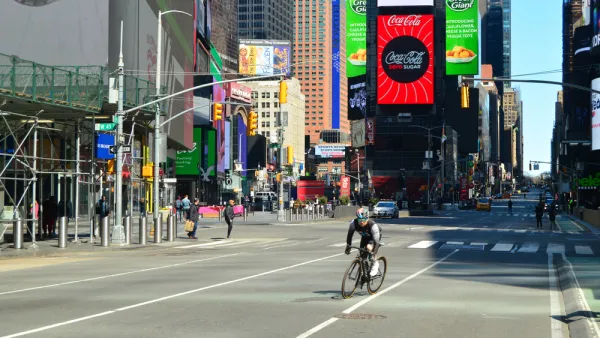A new study by Harvard economists provides the best evidence yet that where children grow up matters to the outcomes of their lives.
Gregor Aisch, Eric Buth, Matthew Bloch, Amanda Cox, and Kevin Quealy share news of a new study by Raj Chetty and Nathaniel Hendren "that has huge consequences on how we think about poverty and mobility in the United States." The study, "The Impacts of Neighborhoods on Intergenerational Mobility," expands on previous research by Chetty and Hendren into income mobility. According to the article: "the researchers are no longer confined to talking about which counties merely correlate well with income mobility; new data suggests some places actually cause it."
The article sums the findings of the story:
"Across the country, the researchers found five factors associated with strong upward mobility: less segregation by income and race, lower levels of income inequality, better schools, lower rates of violent crime, and a larger share of two-parent households. In general, the effects of place are sharper for boys than for girls, and for lower-income children than for rich."
In the words of Chetty and Hendren, "The broader lesson of our analysis…is that social mobility should be tackled at a local level."
The article examines Los Angeles County as its case study, but the article includes numerous interactive features that allow access to the study's findings on other localities around the country. The article also includes interesting insight into the mobility of New York City, which is skewed by the large number of immigrants living in the city, "who have good rates of upward mobility no matter where they live" and "[n]othing about New York in particular caused these children to do better."
The New York Times coverage of the new study includes an op-ed written by Justin Wolfers, who explains the importance of the study as well as an earlier study written by Chetty and Hendren along with Lawrence Katz. Wolfers writes: "These two new studies are the most powerful demonstration yet that neighborhoods — their schools, community, neighbors, local amenities, economic opportunities and social norms — are a critical factor shaping your children’s outcomes." The New York Times coverage also includes anecdotal insights from the experience of the Polk family, who escaped the violence of their home in Bellwood, Illinois to Wood Dale in nearby DuPage County.
FULL STORY: The Best and Worst Places to Grow Up: How Your Area Compares

National Parks Layoffs Will Cause Communities to Lose Billions
Thousands of essential park workers were laid off this week, just before the busy spring break season.

Retro-silient?: America’s First “Eco-burb,” The Woodlands Turns 50
A master-planned community north of Houston offers lessons on green infrastructure and resilient design, but falls short of its founder’s lofty affordability and walkability goals.

Delivering for America Plan Will Downgrade Mail Service in at Least 49.5 Percent of Zip Codes
Republican and Democrat lawmakers criticize the plan for its disproportionate negative impact on rural communities.

Test News Post 1
This is a summary

Test News Headline 46
Test for the image on the front page.

Balancing Bombs and Butterflies: How the National Guard Protects a Rare Species
The National Guard at Fort Indiantown Gap uses GIS technology and land management strategies to balance military training with conservation efforts, ensuring the survival of the rare eastern regal fritillary butterfly.
Urban Design for Planners 1: Software Tools
This six-course series explores essential urban design concepts using open source software and equips planners with the tools they need to participate fully in the urban design process.
Planning for Universal Design
Learn the tools for implementing Universal Design in planning regulations.
EMC Planning Group, Inc.
Planetizen
Planetizen
Mpact (formerly Rail~Volution)
Great Falls Development Authority, Inc.
HUDs Office of Policy Development and Research
NYU Wagner Graduate School of Public Service





























